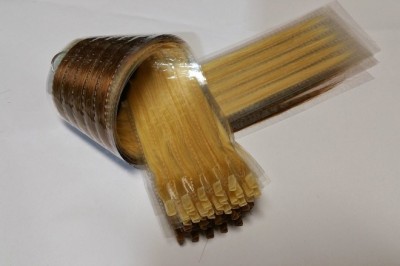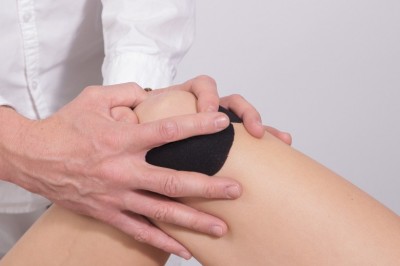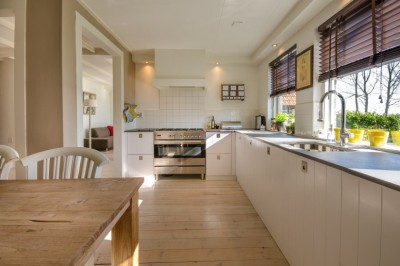Installing A Hardwood Floor With Adhesive
Installing Wood Flooring Using Adhesive
Mostsolid and engineered floors can be installed using wood flooring adhesive. . There are two main techniques for installing using adhesive which will both be explained. Please remember that solid floors are always recommended to be glued down, not using the floating method.
Floating Floor Method
The floating floor method of fixing the wooden floor is done by gluing the tongues and grooves of the floor together. This creates a new floor which is floating over the original floor. Engineered floors can be floated over any solid sub floor and it is the preferred method for laying engineered floors.
It is a good option when the sub floor moisture content is unknown because a damp proof membrane can be used between the floor and subfloor to prevent moisture rising into the new flooring. When floating a floor, an underlay must be used to cancel the effect of any echo and also provide a leveling effect to the sub-floor
This echo is caused by the wood flooring and the sub-floorwhich have a space between them. The noise echoes in this void. The underlay is used to prevent any echo as the two hard surfaces will not be in contact with each other. The choice of underlay is huge for use when floating the floor all of which are adequate. A good quality underlay is advised as this ensures there is less sound echo from foot traffic. Generally the more dense an underlay the less noise!
To float the floor:
Fit a plastic DPM sheet ensuring that the edges of the membrane continue up the side of the skirting. and overlap the seams by 100mm roll out and cut in the underlay ensuring all areas of the floor are covered. Any areas left uncovered with the underlay will cause a bounce in the new floor and will be noisier. A D3 rated PVA wood adhesive is used to glue the boards together.
Fit the floor by placing two beads of adhesive along the upper and lower sides of the groove joint. (It is a common mistake to think that the boards need to be glued along the tongue as this will simply push the adhesive too far into the joint and not create a firm bond between the boards.) down the complete length of the boardthe joints can creak if the glue line is not constant.
Allow the glue to harden before using the floor Any glue residue which has spilled or oozed onto the boards can easily be wiped off a lacquered or oiled board, or sanded off an unfinished floor.
The Glue Down Method
The glue down method of fitting a floor consists of using a wood floor adhesive, trowel led onto the sub-floor such as F Ball B92 enabling the new floor to stick directly to the original floor. This is a very stable method which is the recommended option for most solid wood and parquet floors.
To install wood flooring using an adhesive, you must first ensure that the sub-floor is dry, level and structurally sound. When fitting onto concrete it is best to prime the area first using a PVA based primer to ensure a good bond to the floor. Old concrete is recommended to be checked for moisture and or contamination before the boards are laid. Both engineered flooring and solid flooring can be laid using the glue down method.
Installing:
The first thing to do is ensure the sub-floor is in a satisfactory condition. WWorking in an area just large enough to complete within 30 minutes, apply the adhesive to the sub-floor using a notched trowel ensuring the whole sub-floor area has an even amount of glue. Fit the new floor boards ensuring all boards have been pulled tight and have not been moved out of place as other boards have been fitted. It may be advisable to clamp up any slightly bent boards at this stage.
Leave the adhesive toharden for 12 hours and do not walk on the floor until it is fully set. Unlike PVA adhesive, flooring adhesive is very difficult to remove from the surface of the boards. Ensure that any spills on the boards are wiped off immediately before the boards have dried.
Other Adhesive based fitting methods:
There are other adhesive based fitting options used to fit wood flooring:
Adhesive backed underlay. The underlay has a sticky side covered in a plastic film, which is peeled back as the floor is laid. Envoy multi, Elastion and Acoustalay adhesive are adhesive backed underlays.
Precautions
It is imperative that wood is given adequate chance to acclimatize before being bonded to the sub-floor. Allow at least two weeks for a solid wood floor and 48 hours for an engineered wood floor.
Take a thorough moisture check of the sub- floor for latent or rising damp. If in any doubt an application of an epoxy resin damp screen is advised.
remove from the surface of the boards. Ensure that any spills on the boards are wiped off immediately before the boards have dried.
Other Adhesive based fitting methods:
There are other adhesive based fitting options used to fit wood flooring:
Adhesive backed underlay. The underlay has a sticky side covered in a plastic film, which is peeled back as the floor is laid. Envoy multi, Elastilon and Acoustalay adhesive are adhesive backed underlays.
Precautions
It is imperative that wood is given adequate chance to acclimatize before being bonded to the sub-floor. Allow at least two weeks for a solid wood floor and 48 hours for an engineered wood floor.
Take a thorough moisture check of the sub- floor for latent or rising damp. If in any doubt an application of an epoxy resin damp screen is advised.
Paul is the installation manager at Birbek Wood Floors A UK distributor of hardwood flooring http://www.birbek.com
























